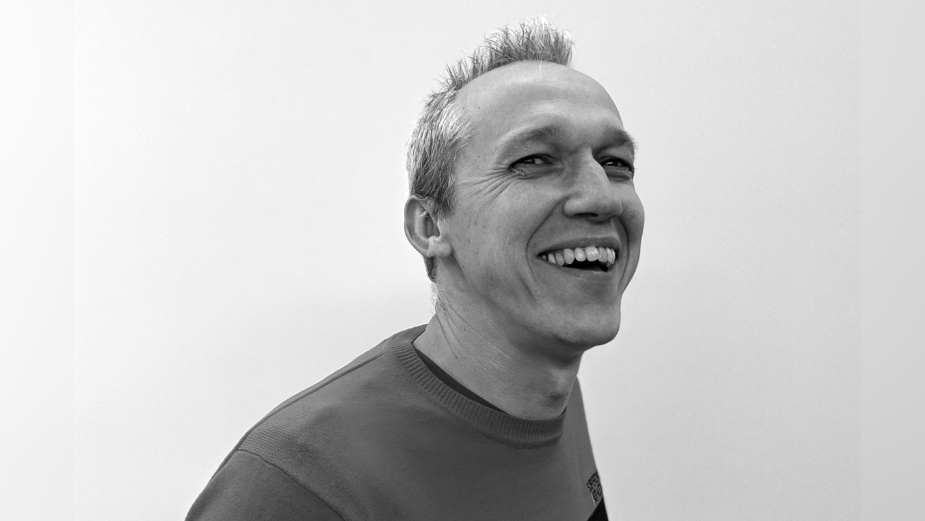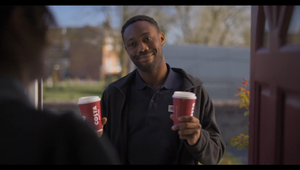
Thinking in Sound: Toby Griffin

Thinking in Sound is a new feature that delves into the minds of the industry’s fantastic music and sound specialists, showing us just how creative this part of the industry is. We dig into inspirations, passions, and approaches to work, whilst also getting a taste of how the industry is changing.
In this interview, we speak to Gramercy Park Studios’ senior sound designer and head of audio Toby Griffin about his approach to music and sound, the ever-evolving industry, and some of his most memorable projects.
Q> When you’re working on a new brief or project, what’s your typical starting point? How do you break it down and how do you like to generate your ideas or response?
Toby Griffin> New projects at GPS are dealt with by our post-producers, so our first discussions are with them. We talk through the creative brief and view early edits or a director’s treatment, to get a good overview of what will be required whilst taking notes and writing down any creative ideas that come to mind. This is followed by a Teams meeting with the agency producer and creatives to discuss the project in more detail and put forward all our collective ideas. It’s my belief that the best work comes from a creative collaboration between the agency, director and myself.
Q> Music and sound are in some ways the most collaborative and interactive forms of creativity - what are your thoughts on this? Do you prefer to work solo or with a gang - and what are some of your most memorable professional collaborations?
Toby> Choosing music for a campaign is often decided ahead of a sound session. But the interaction between music and sound can really lift a project. Music is incredibly important in setting the mood for any film, promo or advert. If the creative idea allows me some scope to add my ideas as well, it can really help push the mood further.
I personally like to get a good idea of the creative direction and be left to my own devices for a day or two, to build the sound bed. Once the mix is shared with the agency, I re-connect with the creatives, and we work collectively towards the final mix. I enjoy working this way, but I also have clients who give me a brief and leave me to get on with building the sound bed and editing music. This shows a great deal of trust in my ability to deliver a mix to their liking and allows me to really influence the overall mix.
One of my most memorable and satisfying collaborations happened in the first lockdown in 2020. Working with Grey London on Braun’s new Multiquick 9 handheld food mixer, I was charged with creating a music bed from the sounds of the product in action. I was sent the product and my wife made all the recipes that featured in the advert whilst I recorded each stage in our kitchen, so I had a set of sounds to build the rhythm from. Once I’d composed the track, it was used on the shoot for timing. Once I’d received the final edit, I tweaked the rhythm track to fit it. Then I built the sound design for the food action shots, which were all in slow motion. The creative team and director, who were a joy to collaborate with, then worked together with me, to fine tune the elements until we had a very powerful sound mix that complimented the picture edit.
Another memorable project was for Boots Hearingcare. I had to recreate the sounds someone with hearing difficulties would experience over several different scenes. The clarity had to improve as the product adjusted to the surroundings and made close conversation clearer. This became a tricky balance to get right. How do you know how far to push the affected sound?
We also did some radio scripts based on the same idea and had to use an audiologist to help us find the right balance between understanding the VO and the amount the mix was affected.
Braun's Multiquick 9 spot.
Q> What’s the most satisfying part of your job and why?
Toby> One of most satisfying parts of my job is creating bespoke sound design (when time allows) as well as remixing music tracks, using stems supplied by a composer. Before Covid, when clients attended sessions in person, the first playback after building the sound bed was always stressful. I’d question whether I’d done a good enough job or not. But the reward of seeing a clients’ response to a good mix is incredibly rewarding.
Q> As the advertising industry changes, how do you think the role of music and sound is changing with it?
Toby> The most obvious change is the increasing use of immersive sound and music mixes, such as binaural and 360 sound. Unfortunately, 360 isn’t currently very usable in advertising, as it’s an individual experience which requires the use of headphones. But radio advertising is really beginning to embrace binaural sound mixes, with the popularity of apps like Spotify.
Q> Who are your musical or audio heroes and why? Are there any particular ideas or pioneers that you go back to frequently or who really influence your thinking about the work you do?
Toby> I don’t have any audio heroes. Musically, there are artists I like, but they don’t influence my work. I try to treat each project individually, without outside influences, unless I’m supplied some specific examples by the creative team.
Q> When you’re working on something that isn’t directly sound design or music, are you the sort of person who needs music and noise in the background or is that completely distracting? What are your thoughts on ‘background’ sound as you work?
Toby> I often find music distracting whilst working through my day. I like to be able to focus on music properly when I’m listening to it.
Q> The quality of the listening experience and the context that audiences listen to music/sound in has changed over the years. There’s the switch from analogue to digital and now we seem to be divided between bad-ass surround-sound immersive experiences and on-the-go, low quality sound - how does that factor into how you approach your work?
Toby> A consideration must always be given to the overall experience and how audio interacts with video. Sometimes I’ll build a particular sound bed that I’m really pleased with, which gets turned down in the final mix, so that it’s really subtle and more of a feeling than a bombastic sound bed. Although it can feel a bit underwhelming as an engineer after putting in so much work, the result can work well.
Toby's reel.
Q> On a typical day, what does your ‘listening diet’ look like?
Toby> Sadly, I have very little time to listen to music whilst working from home with a 6-year-old daughter to look after. But my current go to radio channel is BBC Radio 6. The Huey Morgan show is a favourite, along with David Rodigan on 1Xtra.
Q> Do you have a collection of music/sounds and what shape does it take?
Toby> I love to use my own recordings in sound mixes. Whether it’s birdsong or a thunderstorm recorded in my back garden or some bespoke sound design that I’ve created through experimenting with sound generators and plugins. Knowing that it's original and never been heard before, makes the final mix all the more satisfying.
Q> Outside of the music and sound world, what sort of art or topics really excite you and do you ever relate that back to music?
Toby> I’ve been a big Formula One fan for a long time and have been lucky enough to work on many F1 promos for the BBC and Channel 4 over the last 12 years. Some of the visual work on these projects have been inspirational. I’m also a big reggae fan, music composer and DJ.
Q> Let’s talk travel! It’s often cited as one of the most creatively inspiring things you can do - I’d love to know what are the most exciting or inspiring experiences you’ve had when it comes to sound and music on your travels?
Toby> Ah the good old days, when we were able to travel where we liked, when we liked! Playing live percussion with Orbital at a New Year’s Eve dance party in Australia (91), various trips to Jamaica, including the 5-day Reggae Sunsplash Festival in ‘92 (I’m showing my age now!), recording beautifully sung ragas, chanting and sitars in India and recording a reggae singer after a chance meet at a Jamaican crocodile farm, are particular stand outs. These recordings usually become the focus of new tracks I compose at home.
Q> As we age, our ears change physically and our tastes evolve too, and life changes mean we don’t get to engage in our passions in the same intensity as in our youth - how has your relationship with sound and music changed over the years?
Toby> I find I have increasingly less time to enjoy or compose music nowadays. Working from home, being a father and running a department takes up most of my time. But I get great satisfaction from alerting my daughter to all the varied types of sounds around us in everyday life and music that I like.















